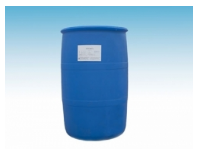Alkyl polyglucoside shampoo is a necessary daily chemical for people's daily life. It is an important personal cleaning product. It may even enter the eyes in the process of hair washing if it is in close contact with the skin. Therefore, it has a very high requirement for the mildness and safety. At present, most of the products on the market use sulfuric acid ester salt as foaming agent, silicone oil as smoothing agent and quaternary ammonium salt as germicide and dandruff remover. These three substances have certain irritation to the eyes. If they are inadvertently put into the eyes during the shampoo process, they will bring foreign body or tingling to the user, especially It is sensitive to mucous membrane. Dry and swollen eyes may appear after use, which seriously affects the feeling of use.

AEG is an improved product of APG, which has better low temperature water solubility, mildness, compatibility and hard water resistance than APG. AEG products have stable chemical properties, no toxicity, no stimulation, safety to human body and environment, easy biodegradation, good low temperature water solubility, hard water resistance, moisturizing and skin care effects. When applied in the formula, it can significantly reduce the overall irritation of the formula, and have good viscosity enhancing effect on the formula system. New and green multifunctional surfactants are widely used.
Green, safe and non irritating alcohol ether glycoside and alkyl glycoside isopropyl glycol sulfosuccinate are used as foaming agent and hair care agent. Both of the two surfactants have the advantages of one agent with multiple effects. Through reasonable compounding with other ingredients, the shampoo with excellent performance can be obtained;
Alkyl glucoside is used as hair smoothing agent. The raw materials of the ingredient are natural oil and starch. It has excellent biocompatibility, green, safe and non irritating advantages;
The formula does not use sulfuric acid ester salt, silicone oil, quaternary ammonium salt and other materials that are irritating to the eyes, and does not irritate the skin and eyes. It is especially suitable for people who are sensitive to the mucous membrane and people who have higher requirements for using feelings.
The penetrant is acid and alkali resistant, has good stability, can still play a good role in penetration under high temperature conditions, has the functions of emulsification, penetration, solubilization, washing, decontamination, etc., can make the scouring and bleaching uniform and thorough, the strength loss of the fabric after scouring is less, does not contain APEO, NPEO and its derivatives, and is biodegradable.
Fabric scouring refers to the desizing, scouring, bleaching and mercerizing of cotton and its synthetic fiber blended fabrics. The purpose of refining is to remove all kinds of impurities from the fiber. One of the characteristics of the refining process is the need to use high concentration of caustic soda to treat the fiber, and the alkali content of the solution is very high. Generally speaking, fine refining penetrants need to have the following characteristics: rapid penetration, strong emulsification, good detergency, high temperature resistance, strong alkali and oxidant, low foam, good degradability, innocuity and safety. In general, it is difficult to meet all the requirements of single component surfactant, and it needs to be compounded and synergized to produce the required scouring agent.
During scouring, the cotton fabric is not easy to be wetted and penetrated by alkali solution because of the impurities such as cotton wax, pectin, protein, cottonseed shell, grease, slurry not removed in desizing process and oil stains on the fabric. In addition, after the traditional fabric is treated with scouring penetrant, the strength loss of fabric often occurs, which is manifested in the fact that the fabric is easy to have holes and ends broken when weaving, which results in the decrease of fabric fastness and affects the comprehensive performance of the fabric.